Heart of Darkness
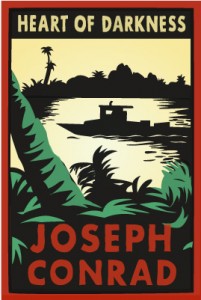 This is one classic I was never assigned in my voyage through academia. Having recently read Barbara Kingsolver’s Poisonwood Bible, I decided now would be a good time to continue the focus on the Belgian Congo with a plunge into Joseph Conrad’s Heart of Darkness.
This is one classic I was never assigned in my voyage through academia. Having recently read Barbara Kingsolver’s Poisonwood Bible, I decided now would be a good time to continue the focus on the Belgian Congo with a plunge into Joseph Conrad’s Heart of Darkness.
I found that it’s not really about the Belgian Congo so much as about the human heart. Where Kingsolver relates Congolese culture from an inside, local, personal perspective, Conrad gives literally “drive-by” impressions as his narrator pilots an English steamboat along an unnamed African river to find and bring back a legendary ivory trader named Kurtz. Drawing from his own experience as a visitor to the Belgian Congo in 1890, Conrad makes no attempt to offer an in-depth look at African life, but rather uses his impressions of brutal European colonization as a universal symbol of human fallenness. The actual Africans are only glimpsed from afar, en masse.
He plays with the motifs of light and darkness, using them to stand for (by turns) the light of European ideals of civilization and enlightenment vs. the darkness of African savagery, the light of our views of ourselves vs. the darkness of our true spiritual condition, the light of personal mythology (Kurtz is a figure about whom many myths flourish) vs. the darkness of real character, and the light of true insight vs. the darkness of everyday experience. We’re separated from the action by multiple frames: our initial narrator is a seaman who is a step removed from Marlowe, who tells the African tale; Marlowe is further separated from the action by the myths about Kurtz. We’re also separated by space and time, as the events of the tale are far away and in the past — even moreso for the modern reader, who isn’t likely to share Marlowe’s stereotypes about savages and the like. Our voyage from our everyday perspective into the insight the story seeks to provide takes us through all these frames and is disorienting at times; the reading experience was a little confusing and dreamlike for me. Somehow I kept missing transitions from one scene to the next, and finding myself immersed in episodes without remembering how I got there. I’m not sure if this is a common experience of reading this novella, or if I was just inattentive or had too many interruptions.
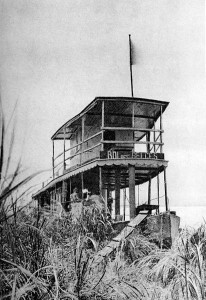
The “heart of darkness” is a spatial phenomenon as well as a spiritual one. Marlowe finds Kurtz, renowned for his culture and ideals and who has been alleged to be suggestive of “Dr. Livingstone, I presume” fame, at the innermost point of his trek upriver, immersed in a tribe he has convinced of his godlike status and lying in a hut surrounded by heads on stakes. “Who is the real savage here?” Conrad seems to ask. Though his jumping-off point is England, anyone who remembers the Puritan response to natives in America must have wondered the same thing. I couldn’t help but remember Miles Standish’s staking of the heads of particularly troublesome Indians around Puritan forts in Mayflower.
Ideals don’t count for much if your nature is too corrupt to achieve them. I can agree with Conrad on this point. Yet I also can see how ideals force a certain level of accountability; they help us to see the changes that need to be made. This is a staple of high school and college literature classes, and I can see how it would facilitate certain kinds of discussions. But it has nothing at all to offer as an examination of actual cultural differences. One wouldn’t expect this to be an enjoyable or easy read, and for me it wasn’t one. But I can see how at the time of its writing, it represented a daring exploration of the disconnect between theory and practice in the business of colonization and commerce.
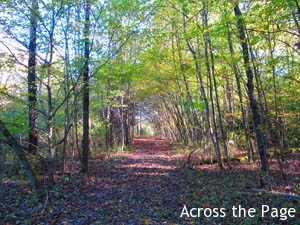
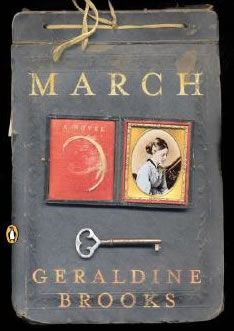

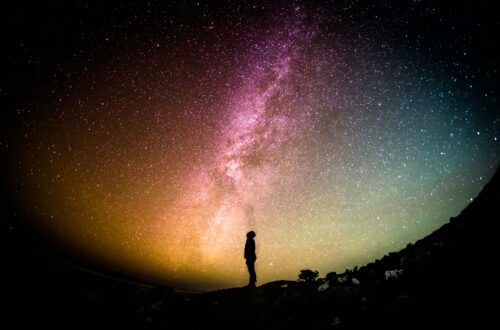
2 Comments
Amy @ Hope Is the Word
I read this one in high school and haven’t revisited it since. I don’t remember liking it, though. Thanks for sharing your thoughts on it; I don’t feel any real need to re-read it anytime soon.
Sherry
My hoomeschool high school students at co-op just read this book, and mostly they had a hard time even understanding what was happening. Conrad does use the language in an odd style. And the story does feel rahter dream-like and untethered. It’s nice to read a fresh perspective from someone a little older than high school age.